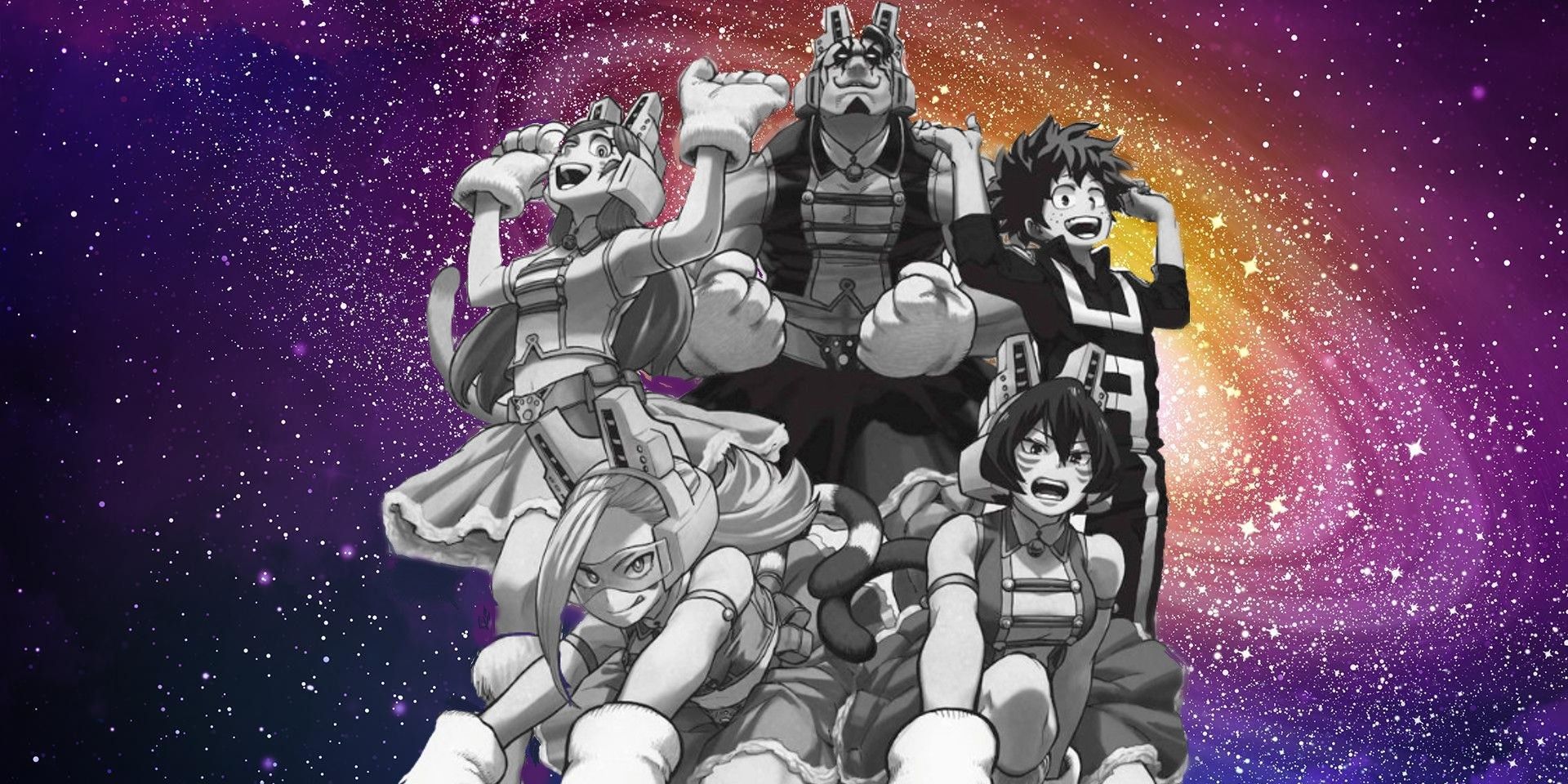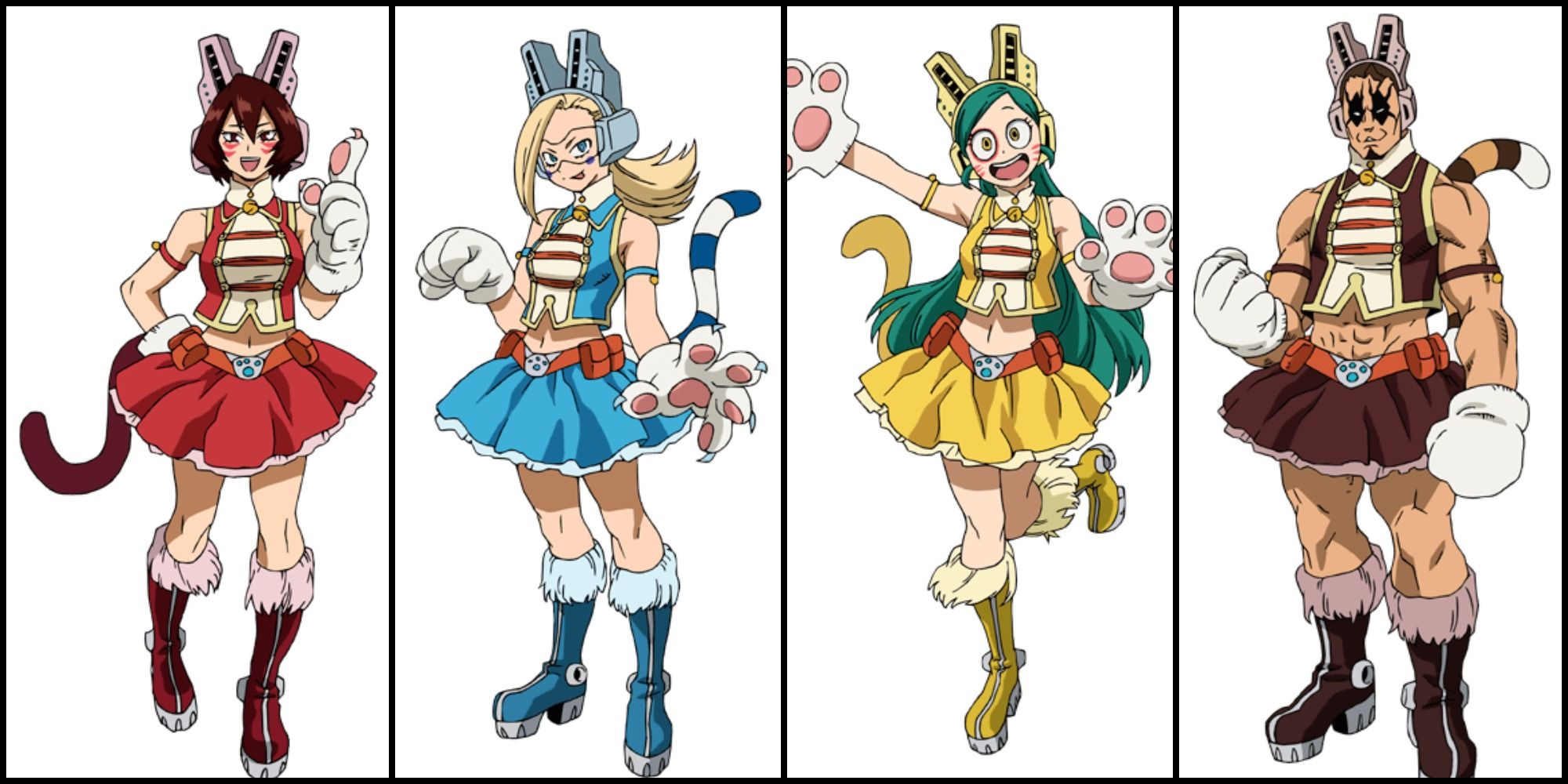While the focus of My Hero Academia is the "not yet ready for pro-time" Class 1-A, the Wild Wild Pussycats show that they are not the only group of quirky individuals blessed with superhuman powers worth fans' attention. Outside of Class 1-A, and the former Pro Heroes who make up the Academy’s faculty, there are a wide range of heroes both in Japan and abroad focused on fighting evil wherever it may exist. The Wild Wild Pussycats are one such group of superheroes. Not only do they fight crime, but they also fought it in one of the coolest and grooviest ways possible.
Introduced in My Hero Academia chapter 70 as trainers for Class 1-A and Class 1-B's training session, the Wild Wild Pussycats are a four-member Pro Hero team who chose to conduct their crime-fighting/rescue ops in matching cat-style uniforms that included matching mini-skirts, boots, techno-cat ears, and tails. The group also used identical furry cat gauntlets which gave them perfect costume symmetry. Normally Class 1-A or any class from the Academy, would not go through a Wild Wild Pussycat training session until much later in their studies. However, because of the desperate times, Class 1-A and 1-B's training was accelerated. Indeed, passing the training would give members of both classes a limited license to act as heroes. But what was it that makes the Wild Wild Pussycats’ training so useful?
First, the combination of their individual quirks makes them a hard force to beat. Ragdoll has the power to know everything about an opponent, including their weakness, just by looking at them. Pixie Bob can control the earth surrounding her to perform in any manner she wishes. Mandalay is a telepath who can drop actionable intelligence, or misinformation, in the minds of anyone she wants. Lastly, Tiger brings the brawn and the ability to “punch and kick” anyone who opposes his team into shape. Moreover, Tiger is My Hero Academia’s first transgender hero.
Second, there is the unconditional support the team members give to each other. There is the support the other three members give to Tiger on living the life as he wishes to lead without judgment. Second, there is the support team members give Ragdoll after her quirk is stolen from her in My Hero Academia Chapter 96. Indeed, rather than abandon her, the team members bond together even more tightly. Ragdoll eventually became the team’s non-superpowered office manager.
Lastly, there is the fact that they are an actual Pro Hero team. While, intuitively, it might seem that a group of superpowered individuals working in unison would be the goal for any society based on superhero justice; the fact of the matter is that in My Hero Academia, superheroes are more individualistic and unable to get along in groups. The Wild Wild Pussycats stood out as being one of the few groups of superheroes who not only worked well together but enjoyed each other's company. Much like Class 1-A, they developed their camaraderie during school. Indeed, one of the reasons behind their matching uniforms was to show the world of My Hero Academia their friendship and that superheroes can work together.


